





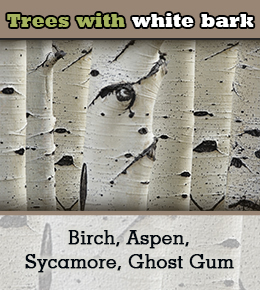 Paper BirchThe root, bark, and tender leaves of the paper birch are used in making tea.How do we paint a tree? Of course, with green color. Is that even a question to ask? And with what color do we paint the bark or the trunk of the tree? With brown color. We never doubt this color combination while thinking of a tree. We may picture the typical hues of the leaves, flowers, or the fruits of a tree. But have we even wondered about what colors the barks of trees actually sport?
Paper BirchThe root, bark, and tender leaves of the paper birch are used in making tea.How do we paint a tree? Of course, with green color. Is that even a question to ask? And with what color do we paint the bark or the trunk of the tree? With brown color. We never doubt this color combination while thinking of a tree. We may picture the typical hues of the leaves, flowers, or the fruits of a tree. But have we even wondered about what colors the barks of trees actually sport?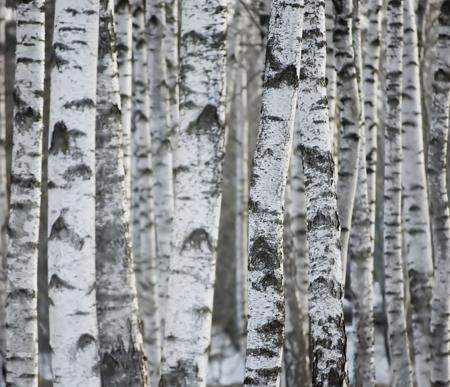 Height: Between 60 and a little over 100 feet. This birch variety is a deciduous, native to the Connecticut river valley in North America. It is known for its bright-white bark, which is originally brownish-red, and gradually turns into a bright-creamy-white. Its bark peels off into thin layers, resembling paper, thus, the name paper birch. Commonly used in landscaping, these trees are planted a lot in universities and public parks.The weeping birch and paper birch are known for their vivid and attractive white tones. The bark, when made into a teepee (or conical shelter), literally appears similar to reflectors put together onto a wall. Small canoes and wigwams for shelter were built using these birch barks by the Native tribes. One such canoe is displayed at Old Town in Maine, and is said to be around 100 years old. For building a canoe, a tree having up to 9 thin layers of bark used to be felled, its bark cut, and striped into one piece. The bark also has medicinal properties; it is used to treat skin problems. The tree is mainly used for pulpwood, plywood, and veneer.The Sycamore (Platanus occidentalis)
Height: Between 60 and a little over 100 feet. This birch variety is a deciduous, native to the Connecticut river valley in North America. It is known for its bright-white bark, which is originally brownish-red, and gradually turns into a bright-creamy-white. Its bark peels off into thin layers, resembling paper, thus, the name paper birch. Commonly used in landscaping, these trees are planted a lot in universities and public parks.The weeping birch and paper birch are known for their vivid and attractive white tones. The bark, when made into a teepee (or conical shelter), literally appears similar to reflectors put together onto a wall. Small canoes and wigwams for shelter were built using these birch barks by the Native tribes. One such canoe is displayed at Old Town in Maine, and is said to be around 100 years old. For building a canoe, a tree having up to 9 thin layers of bark used to be felled, its bark cut, and striped into one piece. The bark also has medicinal properties; it is used to treat skin problems. The tree is mainly used for pulpwood, plywood, and veneer.The Sycamore (Platanus occidentalis)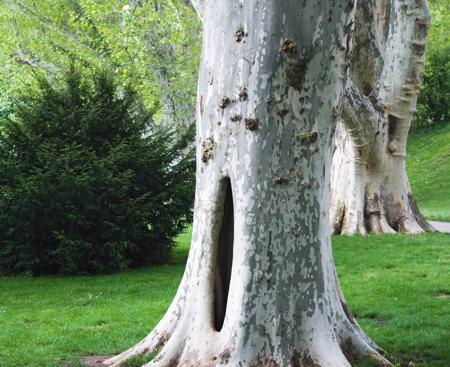 Height: Approximately 100 feet.The sycamore tree trunk undergoes exfoliation, but in patterns. The magic of this process can be seen if we carefully observe the main stem of the tree, from bottom to top. The lower portion of the bark is grayish-brown. At around the height of ¼ of the bark, it starts peeling off. This portion appears scaly and camouflaged, as it is tanned and half-brown in color. Above, at the top of the trunk, the bark looks almost white.
Height: Approximately 100 feet.The sycamore tree trunk undergoes exfoliation, but in patterns. The magic of this process can be seen if we carefully observe the main stem of the tree, from bottom to top. The lower portion of the bark is grayish-brown. At around the height of ¼ of the bark, it starts peeling off. This portion appears scaly and camouflaged, as it is tanned and half-brown in color. Above, at the top of the trunk, the bark looks almost white.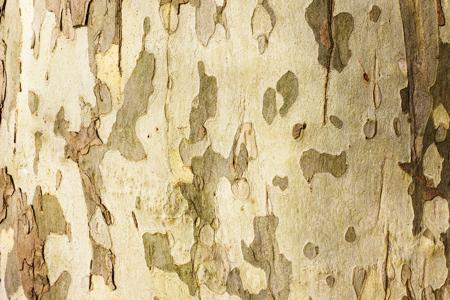 The upper smoother, white portion defines a mature trunk and branches. This gradation, along with the scales on the skin, makes the sycamore unparalleled. This tree can grow in sandy soil, and also along rivers and streams. These are known to have huge, broad trunks; the diameter reaching over ten feet in some trees.The Quaking Aspen (Populus tremuloides)
The upper smoother, white portion defines a mature trunk and branches. This gradation, along with the scales on the skin, makes the sycamore unparalleled. This tree can grow in sandy soil, and also along rivers and streams. These are known to have huge, broad trunks; the diameter reaching over ten feet in some trees.The Quaking Aspen (Populus tremuloides)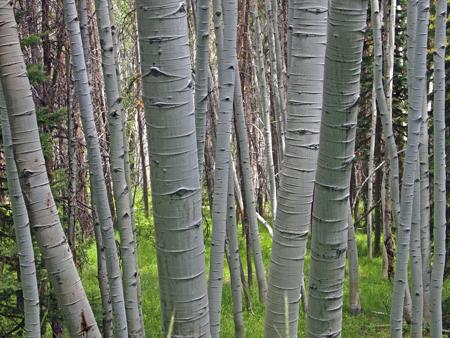 Height: Between 40 to 100 feet.The quaking aspen takes its name from the 'quaking' or shaking of its leaves. It is native to the United States, and is found in Alaska and the western part of the country. Also a deciduous tree, it has a bark that peels off and goes on thinning, becoming thicker and furrowed as it ages. This process alters its shape, especially towards the base.
Height: Between 40 to 100 feet.The quaking aspen takes its name from the 'quaking' or shaking of its leaves. It is native to the United States, and is found in Alaska and the western part of the country. Also a deciduous tree, it has a bark that peels off and goes on thinning, becoming thicker and furrowed as it ages. This process alters its shape, especially towards the base. 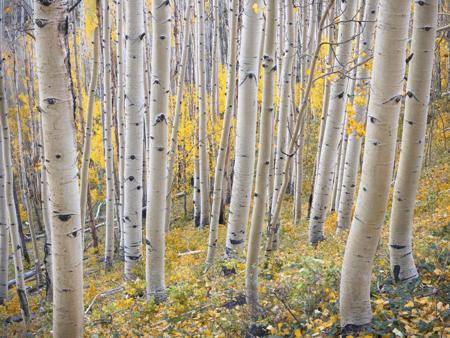 The color of its bark is greenish-white or grayish-white. The tree is prized for its white bark and beautiful fall colors. It is a very important fiber source, and is used in the manufacturing of pulp and flake-board. Its wood serves very well for playground structures, as it does not splinter.The Ghost Gum (Corymbia aparrerinja)
The color of its bark is greenish-white or grayish-white. The tree is prized for its white bark and beautiful fall colors. It is a very important fiber source, and is used in the manufacturing of pulp and flake-board. Its wood serves very well for playground structures, as it does not splinter.The Ghost Gum (Corymbia aparrerinja)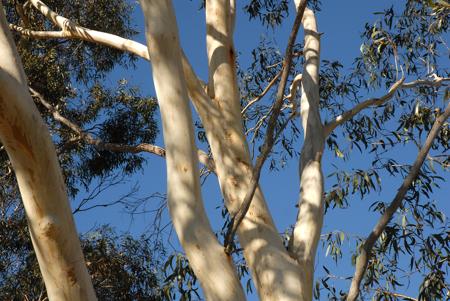 Height: Approximately 60 feet.A tree native to Australia, it is found mainly in the arid central regions of the Gibson desert and parts of the Northern Territory. Rocky slopes, flat zones near dry creeks, and red sand plains form its habitat. It belongs to the Eucalyptus genus. It is known for its typical aroma, similar to that of methanol.
Height: Approximately 60 feet.A tree native to Australia, it is found mainly in the arid central regions of the Gibson desert and parts of the Northern Territory. Rocky slopes, flat zones near dry creeks, and red sand plains form its habitat. It belongs to the Eucalyptus genus. It is known for its typical aroma, similar to that of methanol.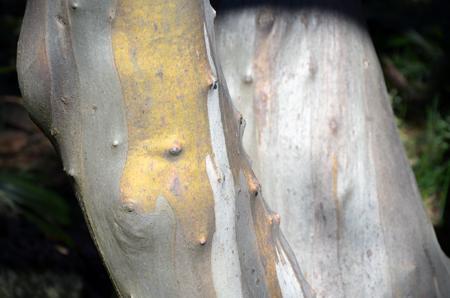 These trees are drought-tolerant, and can grow well on dry river beds too. The bark of the ghost gum is smooth throughout, and creamy-white or pinkish in color. It is slightly powdery, and shreds into thin pieces.The White Poplar (Populus alba)
These trees are drought-tolerant, and can grow well on dry river beds too. The bark of the ghost gum is smooth throughout, and creamy-white or pinkish in color. It is slightly powdery, and shreds into thin pieces.The White Poplar (Populus alba)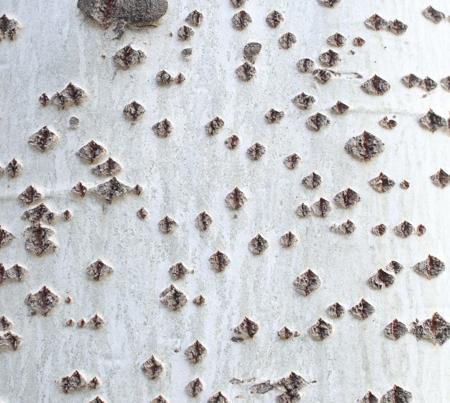 Height: Approximately 70 feet.Also known as the silver-leaf poplar, this tall tree is native to central and southern Europe, western Siberia, and central Asia. It came to the Americas around the 1740s. The bark of the white poplar is originally greenish-white and smooth. However, it gradually transforms into a dark-colored bark, with a rough surface. The cross-section of the stem of this tree shows a star-shaped pith with five points. It is planted as an ornamental tree for its color contrast of green and white.
Height: Approximately 70 feet.Also known as the silver-leaf poplar, this tall tree is native to central and southern Europe, western Siberia, and central Asia. It came to the Americas around the 1740s. The bark of the white poplar is originally greenish-white and smooth. However, it gradually transforms into a dark-colored bark, with a rough surface. The cross-section of the stem of this tree shows a star-shaped pith with five points. It is planted as an ornamental tree for its color contrast of green and white.
Copyright © www.100flowers.win Botanic Garden All Rights Reserved